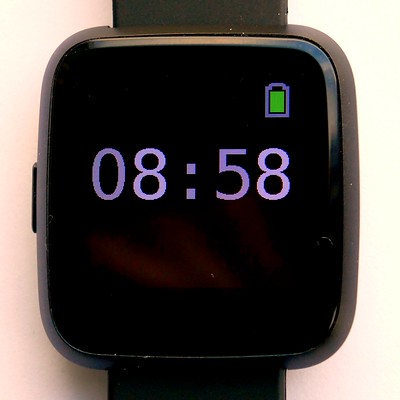Watch Application System in Python
Introduction
Although still in its infancy wasp-os provides many example applications including a simple digital clock, a stopwatch, a step counter and a heart rate monitor. All of these, together with access to the MicroPython REPL for interactive tweaking and testing, are running on PineTime. It keeps time well and has enough power saving functions implemented that it can survive for well over 72 hours between charges so even at this early stage it is functional as a wearable timepiece.
Wasp-os includes a robust bootloader based on the Adafruit NRF52 Bootloader. It has been extended to make it robust for development on form-factor devices without a reset button, power switch, SWD debugger or UART. This allows us to confidently develop on sealed devices relying only on BLE for updates.
Videos

Open source heart rate monitoring for Pine64 PineTime

An M2 pre-release running on Pine64 PineTime

How to develop wasp-os python applications on a Pine64 PineTime

Developing for Pine64 PineTime using wasp-os and MicroPython
Documentation
Wasp-os is has extensive documentation which includes a detailed Applicaiton Writer's Guide to help you get started coding for wasp-os as quickly as possible.
Building from source
Building wasp-os and launching the wasp-os simulator requires Python 3.6 (or later) and the following python modules: click, numpy, pexpect, PIL (or Pillow), pyserial, pysdl2.
On Debian Buster the required python modules can be obtained using the following commands:
sudo apt install \
git build-essential libsdl2-2.0.0 \
python3-click python3-numpy python3-pexpect \
python3-pil python3-pip python3-serial
pip3 install --user pysdl2You will also need a toolchain for the Arm Cortex-M4. wasp-os is developed and tested using the GNU-RM toolchain (9-2019-q4) from Arm.
Note
There are known problems with toolchains older than gcc-7.3 when link time optimization is enabled during the MicroPython build (and LTO is enabled by default).
Get the code from https://github.com/daniel-thompson/wasp-os :
git clone https://github.com/daniel-thompson/wasp-os
cd wasp-os
make submodules
make softdeviceBuild the firmware:
make -j `nproc` BOARD=pinetime allFinally to test out ideas and concepts on the simulator try:
make simSee :ref:`Testing on the simulator` for more details on how to use the simulator.
Installing
Use an SWD programmer to install bootloader.hex to the PineTime.
This file is an Intel HEX file containing both the bootloader and the Nordic
SoftDevice. Once the bootloader is installed the watch will boot, display the
Pine64 logo and wait for a OTA update.
See the PineTime SWD programming guide for instructions on how to reprogram the PineTime using various different SWD programmers.
Note
If you have a new PineTime then it will have been delivered with flash protection enabled. You must disable the flash protection before trying to program it.
Be careful to disconnect cleanly from the debug software since just pulling out the SWD cable will mean the nRF52 will still believe it is being debugged (which harms battery life because the device won't properly enter deep sleep states).
To install the main firmware using an Android device:
- Copy
micropython.zipto your Android device and download nRF Connect for Android if you do not already have it. - In nRF Connect, choose settings and reduce the DFU packet count from 10 to 4.
- Connect to PineDFU using nRFConnect, click the DFU button and send
micropython.zipto the device.
Alternatively, to install the main firmware from a GNU/Linux workstation:
- Look up the MAC address for your watch (try:
sudo hcitool lescan). - Use ota-dfu to upload
micropython.zipto the device. For example:tools/ota-dfu/dfu.py -z micropython.zip -a A0:B1:C2:D3:E3:F5 --legacy
At the end of this process your watch will show the time (03:00) together with a date and battery meter. When the watch goes into power saving mode you can use the side button to wake it again.
At this point you will also be able to use the Nordic UART Service to
access the MicroPython REPL, although currently you must send ^C to
interrupt the program that updates the watch display. You can use
tools/wasptool --console to access the MicroPython REPL.
To set the time and restart the main application:
^C
watch.rtc.set_localtime((yyyy, mm, dd, HH, MM, SS))
wasp.system.run()Or just use:
./tools/wasptool --rtcwhich can run these commands automatically.
As mentioned above there are many drivers and features still to be developed, see the :ref:`Roadmap` for current status.
